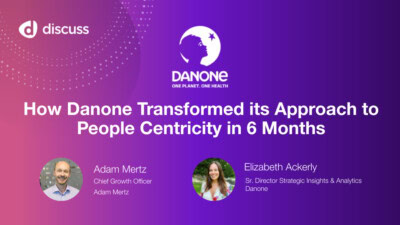Understanding the Importance of Qualitative Data Analysis in Research

Understanding what drives consumers is the key to launching products and campaigns that resonate, grabbing market share from competitors, and accelerating the growth of your business. While numbers and statistics are helpful, they often leave out the real story behind consumer choices. This is where qualitative data analysis steps in, giving marketers a richer view of their audience’s emotions and motivations. By diving deep into consumer insights through methods like interviews and focus groups, brands can uncover the “why” behind their customers’ actions. This understanding can lead to campaigns that resonate on a personal level, transforming not just the way companies market their products but how they connect with their audience. Let’s explore how qualitative data analysis can reshape marketing strategies for better engagement and success.
Qualitative data analysis is vital in marketing because it provides deep insights into consumer behaviors, motivations, and preferences that quantitative data alone cannot capture. By understanding the emotional and psychological factors behind consumer actions, marketers can develop more effective strategies tailored to their target audience’s needs.
The Role of Qualitative Data in Marketing
At its core, qualitative data serves as the compass that navigates businesses through the complex landscape of consumer behavior. While quantitative metrics may flood you with numbers—like percentages of engagement or sales volume—qualitative insights go deeper, revealing the why behind those numbers. For instance, it’s not just about knowing that 60% of customers are satisfied; it’s about understanding what specifically makes them feel that way. Through methods like interviews, focus groups, and observational studies, brand and research teams can capture intricate narratives that paint a comprehensive picture of their audience.
Moving beyond mere statistics, qualitative data helps identify emerging trends and shifts in consumer sentiment.
For example, by using qualitative research methods, companies can go beyond simply collecting data on snack consumption and instead uncover the emotional connections consumers have with specific flavors and textures. Insights from focus groups revealed that customers weren’t just eating snacks; they were experiencing feelings of joy and nostalgia with every bite. This deeper understanding of consumer emotions helped inform product development, enabling the creation of new flavors that better resonated with customers’ emotional experiences.
Moreover, incorporating qualitative analysis into marketing not only aids in product innovation but also enhances customer engagement. When brands genuinely listen to consumer feedback through conversations rather than surveys alone, they can adapt more quickly and meaningfully to consumer needs. GenAI tools have emerged to assist in this endeavor by streamlining data collection processes and analyzing customer sentiments from social media and feedback forms swiftly and efficiently.
The integration of both qualitative and quantitative approaches forms a more holistic and informed marketing strategy.
This means harnessing the strengths of both methodologies enables companies to maintain agility in their strategies while also presenting a rounded understanding of consumers. By validating findings through diverse data types, businesses gain richer insights into customer behaviors—not merely when or how often they buy but why they feel compelled to choose one brand over another. In today’s ever-changing marketplace, relying solely on numerical data isn’t enough; moving forward requires understanding the broader narrative intertwined within those figures. As Rasa Urbonaite, CMO at Breezit emphasizes, integrating both research methodologies is essential for informed decision-making.
Recognizing the role of qualitative data enriches marketing strategies and sets the stage for better understanding the nuances of consumer preferences.
Exploring Consumer Behavior Insights
Understanding consumer psychology provides marketers with a treasure trove of information. Recognizing what fuels desires and influences choices can shape effective marketing campaigns. One of the most valuable tools in this exploration is qualitative data, which allows brands to uncover deeper insights.
This approach demonstrates the powerful role qualitative data plays in revealing consumer needs that numbers alone cannot quantify. Quantitative research might show that sales have increased or decreased, yet it does not dive into why those changes happen.
The nuances captured through qualitative insights provide the context needed to understand market shifts and consumer desires in depth.
Understanding Emotional Connections
Marketing is as much about emotion as it is about logic. Studies show that when consumers connect emotionally with a product or service, they are more likely to remain loyal. This emotional connection is often built through storytelling that evokes powerful feelings such as nostalgia and happiness, which encourage consumers to return repeatedly.
However, many marketers are hesitant to fully embrace qualitative methods due to concerns about bias or subjectivity inherent in anecdotal evidence. While such concerns are valid, they shouldn’t overshadow the immense value qualitative insights offer. Quality frameworks and structured interviewing can help mitigate bias and ensure a more balanced understanding of consumer sentiments.
We’ll explore how these emotional connections manifest into broader patterns across different market segments, further enhancing our strategic approaches toward capturing these audiences effectively.
Identifying Market Patterns and Trends
Capturing market trends early on can give companies a competitive edge. The importance of qualitative data analysis cannot be overstated when it comes to uncovering these trends. By exploring social media conversations, product reviews, and online forums, brands can gather nuanced insights that statistics alone may overlook. For instance, a spike in discussions around sustainability could signal an emerging demand for eco-friendly products, allowing companies to pivot their strategies in response to consumer interest.
Methodologies
One effective way to decode this sea of qualitative data is through sentiment analysis, which utilizes Natural Language Processing (NLP) tools to assess the overall tone of consumer conversations around your brand. This method doesn’t merely calculate how many ‘likes’ or ‘shares’ your posts get; instead, it goes deeper to help marketers understand whether the feedback is positive, negative, or neutral. Imagine scrolling through social media and seeing not just numbers but real-time emotional reactions from consumers.
Following this sentiment analysis, ethnographic studies provide another layer of understanding. Researchers embed themselves within consumers’ environments, observing how products are used in everyday life. Such immersion yields powerful insights into usage habits and contextual factors that shape consumer behaviors. For example, watching how families interact with a kitchen appliance over a week can reveal essential details about its practicality that surveys would likely miss.
Enhancing Marketing Strategies with Qualitative Data
Qualitative data analysis serves as the backbone of effective marketing strategies by offering insights that go beyond mere statistics and numbers. It helps businesses understand not just what consumers are doing, but why they are doing it.
For example, imagine launching a new product. If you only rely on quantitative data, you may see that sales figures fluctuate, but you miss the insights behind those changes—like customer sentiments or emotional triggers. This is where qualitative data comes in, revealing conversations around your brand and capturing the emotions associated with your products.
Armed with these rich insights, marketers can customize their strategies in profound ways. By tailoring messages to specific audience segments identified through qualitative research, personalization becomes possible.
Advantages of Qualitative Insights in Marketing Research
Using qualitative data analysis provides marketers with an opportunity to peel back the layers of consumer behavior and truly understand the “why” behind actions, rather than merely the “what.” This depth of understanding is crucial for crafting campaigns that resonate on a personal level, thereby fostering a connection between consumers and brands.
What’s important here is that while quantitative data can tell you how many times a song was streamed, it’s qualitative analysis that uncovers why various demographics prefer particular genres at different times. These insights enable brands to enhance customer experience significantly by tapping into their emotions and lifestyles.
Most marketers agree that qualitative data provides deeper insights into consumer behavior compared to quantitative metrics alone. This statistic underscores not only the value placed on rich, textured narratives but also highlights how these narratives can lead to successful marketing strategies through authentic engagement.
Moreover, qualitative insights facilitate innovation by identifying emerging trends and consumer needs that might be lost in mere numbers.
By deeply engaging with consumer psyche through focus groups or in-depth interviews, companies can identify latent needs—those desires consumers may not explicitly articulate but are nonetheless vital. A great example of this is seen in brands, which leverage platforms like Discuss to connect directly with their audience; they highlight how effective qualitative insights have driven product innovations tailored to actual consumer preferences. Their approach includes agile methodologies where feedback is gathered continuously, demonstrating that brands are willing and able to adapt swiftly based on real-time data.
Ultimately, fostering a culture that values qualitative insights leads businesses to better align their strategies with the genuine needs and emotions of consumers. When organizations prioritize the human element in their research processes, they open doors for creative marketing efforts that generate higher engagement levels.
This seamless integration of qualitative data transforms not just marketing campaigns but also the relationship brands maintain with their audiences.
Ready to move beyond numbers and into stories that matter? Let Discuss help you uncover the insights that will drive your next breakthrough.
Ready to unlock human-centric market insights?
Related Articles

5 Trends Shaping the Future of Qualitative Insights
By Jim Longo, Co-Founder & Chief Strategy Officer at Discuss Each year, the Greenbook Research Industry Trends (GRIT) Business &…
By Jim Longo, Co-Founder & Chief Strategy Officer at Discuss Each year, the Greenbook Research Industry Trends (GRIT) Business &…

Navigating Tomorrow: A Glimpse into the Future of Market Research in 2024
Author: Jim Longo, Co-founder & Chief Strategy Officer As a veteran with over 30 years in the market research industry,…
Author: Jim Longo, Co-founder & Chief Strategy Officer As a veteran with over 30 years in the market research industry,…

Qualitative Research: Understanding the Goal and Benefits for Effective Analysis
As market trends evolve at lightning speed in the age of digital transformation, having an intimate understanding of consumer desires…
As market trends evolve at lightning speed in the age of digital transformation, having an intimate understanding of consumer desires…



